Microbes Are Slowly Cleaning the Gowanus Canal, Researchers Find
Remarkable adaptations to toxins in the polluted waterway have already inspired the development of a protein gel to encapsulate cadmium so it can be safely reused.

Communities of tiny microbes are surviving and thriving in the Gowanus Canal, researchers have found. Photo by Susan De Vries
By Kirstyn Brendlen, Brooklyn Paper
The bottom of the Gowanus Canal is not, strictly speaking, a hospitable environment.
It’s covered in a thick layer of contaminated sediment, the product of more than 150 years of industrial pollution and combined sewer overflow. The toxic sludge, nicknamed “black mayonnaise,” is packed with coal tar, heavy metals, and long-banned industrial chemicals.
Even with the federal Superfund cleanup about one-third complete, there are still tens of thousands of cubic yards of black mayonnaise at the bottom of the Gowanus. When it rains, combined sewer overflow dumps gallons of untreated sewage into the water.
Despite it all, there’s a thriving miniature ecosystem of billions of microbes just atop the sediment. What’s more, researchers have found, those microbes are — very slowly — cleaning the canal themselves.
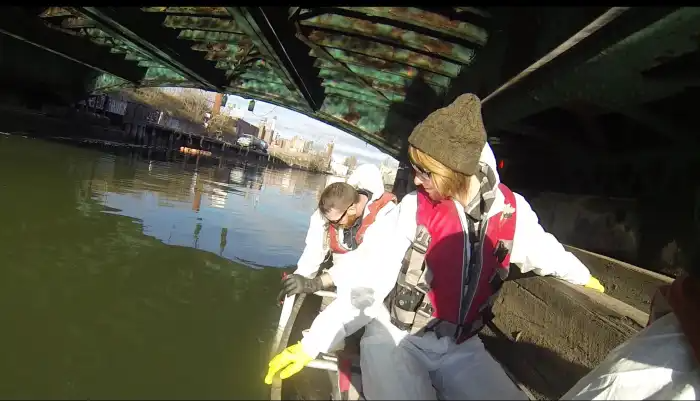
Elizabeth Hénaff, the NYU Tandon School of Engineering professor who led the research team, said the discovery was “kind of poetic.”
“From a human perspective, this environment is totally forsaken and we need to make it go away in any way possible,” she said. “But from a microbial perspective, it’s an environment where they’re not only surviving, but also thriving and also doing really good work degrading these toxic compounds.”
Those microbes could have a lot to teach human scientists about environmental remediation, according to a paper Hénaff’s team published in the Journal of Applied Microbiology this week.
The study started years ago, when co-authors Matthew Seibert and Ian Quoate learned the Superfund cleanup would include dredging almost 600,000 cubic yards of sediment out of the water.
It felt like a “violent intervention” for an ecosystem, Hénaff said, even one as damaged as the Gowanus Canal. They wanted to know what, exactly, that ecosystem looked like.
So they paddled out on canoes to collect sediment samples, each one packed with “extremophiles” — microscopic beings like bacteria, viruses, fungi, and algae who thrive in challenging environments.
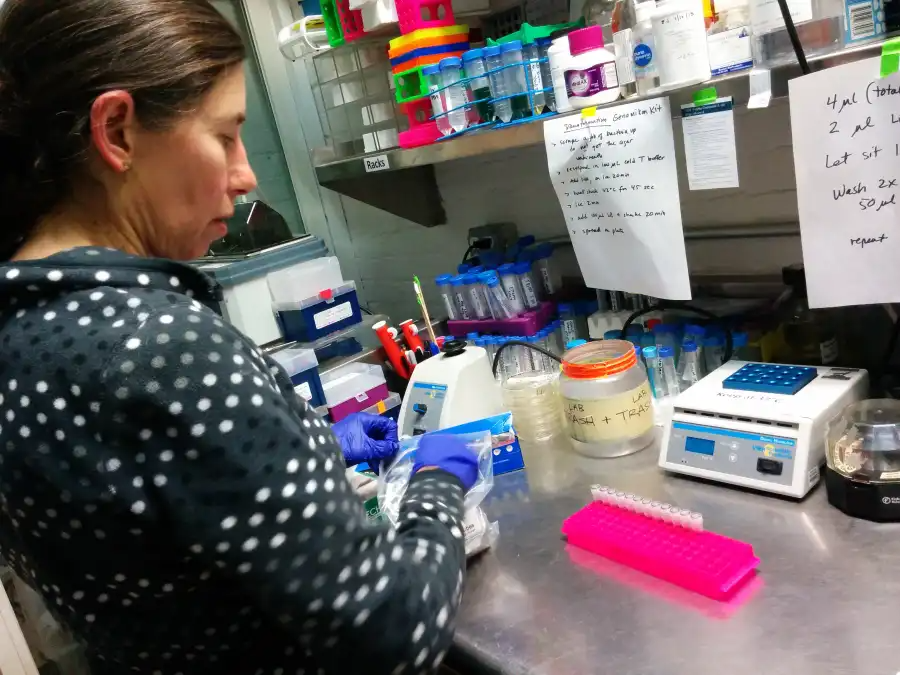
They found more than 400 species of microorganisms living in little communities at the bottom of the canal.
Many of those species, after decades of extraordinary evolutionary pressure, had developed an extraordinary ability. They were actively breaking down pollutants like benzene, toluene, and petrochemicals and isolating heavy metals.
They were doing it, Hénaff said, to protect themselves.
“These compounds are toxic to humans, but they’re also toxic to microbes,” Hénaff explained. “By doing that, they’re able to kind of create micro-environments that are less toxic on the inside.”
Over time, some microbes have even grown dependent on the complex hydrocarbons in the canal as a source of fuel.
“All organisms need to get carbon from somewhere,” Hénaff said. “We get it from sugar, mostly. Plants get it from carbon dioxide in the air, and microbes get it from really wherever they can. In this particular case, some of them have evolved to not just be able to survive in this toxic environment, but also to actually need these toxic compounds as a primary carbon source.”
The team was thrilled by the discovery for several reasons. For one, Hénaff said, it was comforting to confirm that nature can, in some ways, heal itself from “drastic anthropogenic consequences.”
They also hope humans can follow the microbes’ example to create new methods to clean up ecological disasters like the Gowanus Canal — without the use of heavy machinery and disruptive dredging.
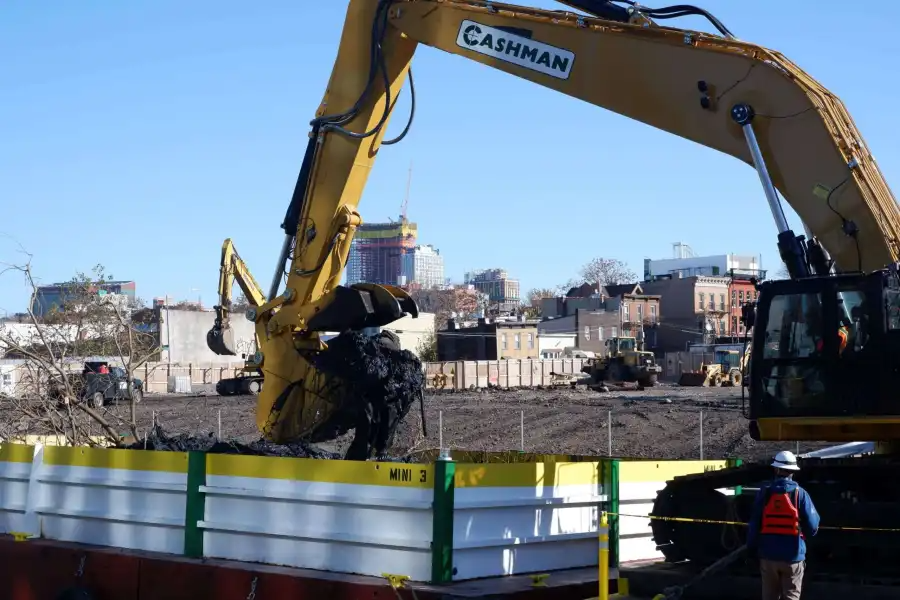
Right now, the microbes are not quite capable of finishing the job themselves.
“Left to their own devices, these microbes are operating very, very slowly,” Hénaff said. “It certainly is not operating on a human scale timeline, or a development scale timeline.”
Researchers could learn how to modify the microbes’ environment to make them work faster, she said, or use them as a resource for biotechnical engineering. Scientists can genetically modify individual microbes or small communities, but would never be able to create such a large and complex ecosystem as the one they discovered in the canal.
“It’s a 150-year-old toxic petri dish that has yielded this quite marvelous adaptation that is beyond our capacity as scientists to be able to create from scratch,” she said. “It’s a valuable resource to learn how microbes respond to contaminated environments, then hopefully use those insights for biotechnological applications.”
Hénaff is particularly excited about the potential to use the microbes to recover and repurpose heavy metals. Metal atoms can’t be broken down, but they’re still harmful to microbes and their environments — so some bacteria developed the ability to “fix” them, encapsulating them with proteins that prevent them from reacting with any other substances.

“These heavy metals, in the context of the canal, they’re a source of toxicity and we need to dig them out,” she said. “Somewhere else, somebody is opening new strip mines to extract that same compound — like cadmium, for example.”
If that “fixing” mechanism can be implemented at scale, metals could be recovered in substantial amounts from various sites — possibly reducing the need for those mines.
Research will continue at NYU. A lab in the school’s Department of Chemical and Biomolecular Engineering has produced a gel-like substance inspired by those metal fixing proteins and is exploring its potential.
In an effort to make the microbes more relatable, Hénaff and her team created an art installation at BioBAT Art Space in Sunset Park. The exhibit, “Channels,” comprised 300 gallons of Gowanus Canal water and sediment in large tanks. Over a year, visitors could watch the changing ecosystem.
“What we were able to see is that these environments are actually gorgeous, they’re thriving,” Hénaff said. “There’s all these different epochs that happened, there’s these biofilms that formed and grew and died and sedimented, and then there’s different algae blooms that happened and all these cathedrals of bubbles.”
The ongoing Superfund project is likely to have a significant impact on the canal’s microbes. Most of the contaminated sediment will be scooped out, and what remains will be capped over, isolating most remaining organisms.
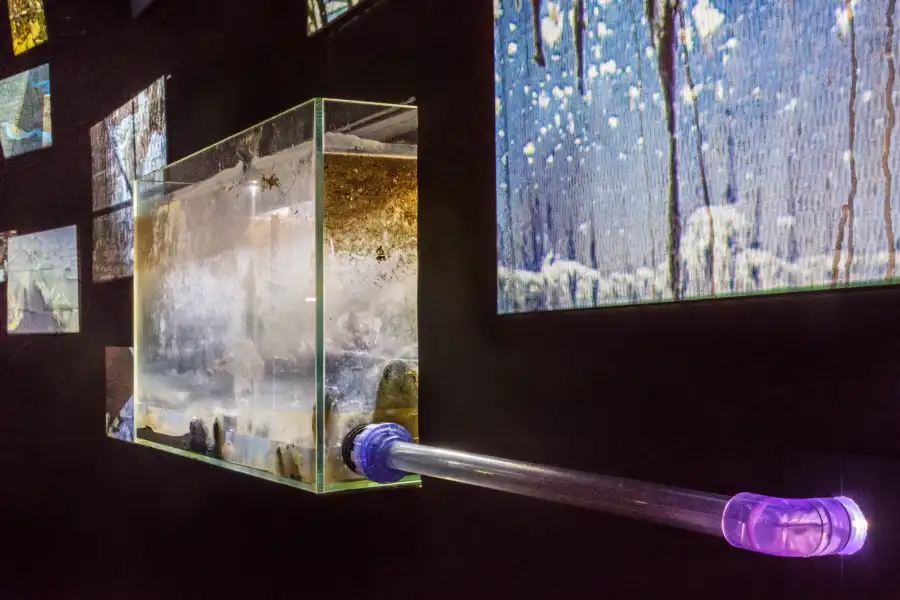
“I’m not sad about it, because there’s many things to prioritize at this moment, and one of them is certainly public health,” Hénaff said. “The canal has been contaminated for over 150 years, and it’s really important in an increasingly residential area to curtail the path of contamination.”
Along with the canal-cleaning microbes, the research team discovered several species of antibiotic-resistant bacteria residing in the canal. That wasn’t totally unexpected, Hénaff said. Waterways polluted by both industrial contaminants and human waste are a hallmark of urbanization, and untreated sewage is a primary source of antimicrobial resistance in nature.
Hénaff believes the discoveries made in the canal are part of a larger lesson to be learned from microbes, especially as climate change progresses. Microbial generations span only about 20 minutes, she said, and each generation is a chance to adapt to rapidly changing conditions. Even though they can adapt much faster than humans can, microbes are often overlooked.
“But microbes have been around for billions of years before multicellular organisms and I would argue that they’ll be here for billions of years after,” she said. “I think we really need to recruit them as collaborators in our understanding of what it means to relate to the environment.”
Editor’s note: A version of this story originally ran in Brooklyn Paper. Click here to see the original story.
Related Stories
- What Exactly Is the Black Mayonnaise at the Bottom of the Gowanus Canal?
- Long-Delayed Gowanus Canal Overflow Tank Progresses With Excavation
- National Grid Files Suit Claiming Others Should Help Pay for Gowanus Cleanup
Email tips@brownstoner.com with further comments, questions or tips. Follow Brownstoner on X and Instagram, and like us on Facebook.


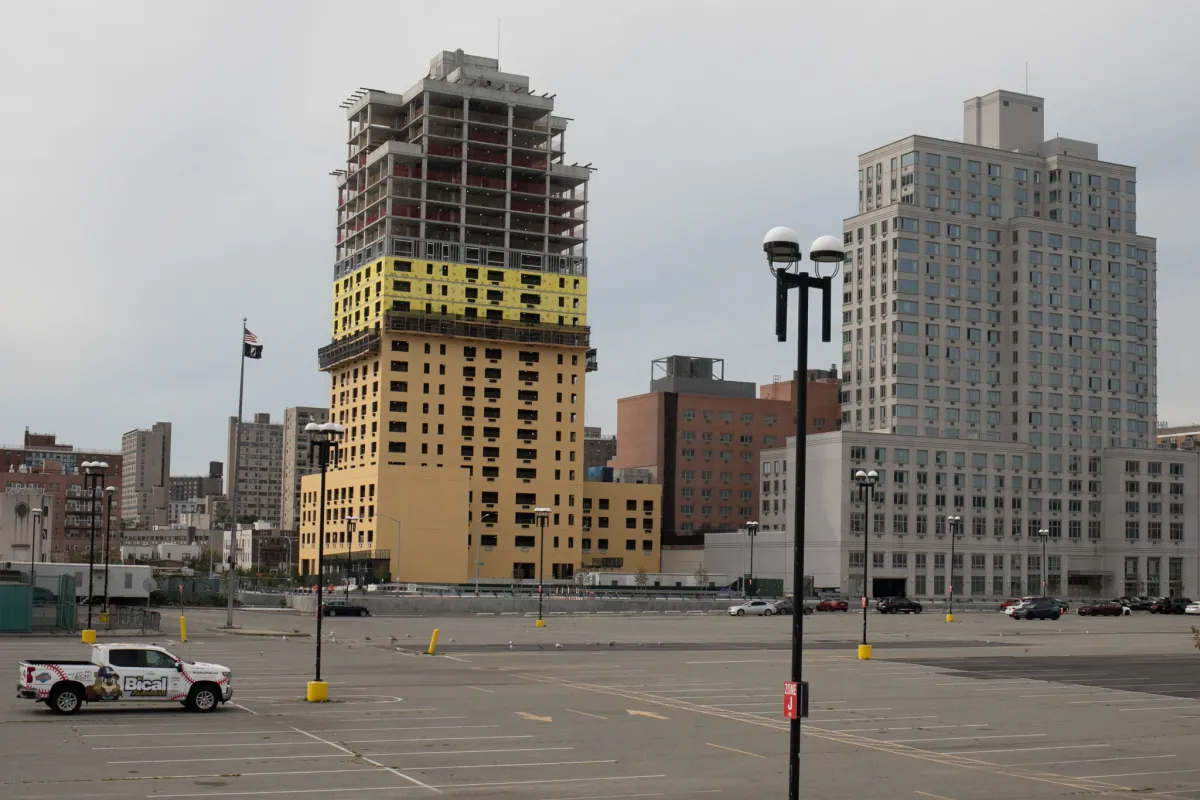


What's Your Take? Leave a Comment